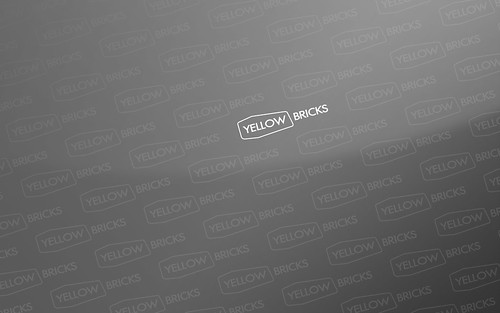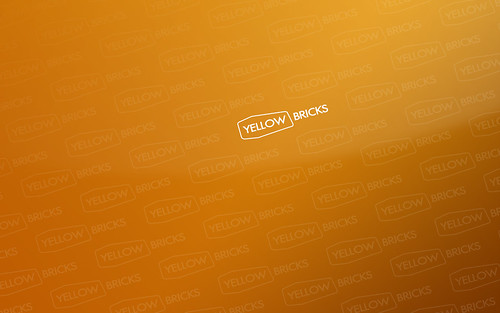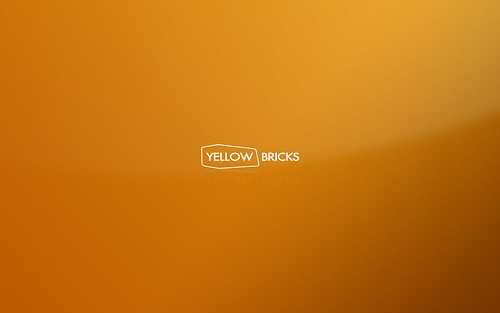I was looking for a new wallpaper for my laptop as the old ones started to bore me. Coincidentally I ran into Sander Ras this week. Sander designed the Yellow Bricks logo almost two years ago, and I asked him if he could create a wallpaper for me based on this logo. This is what he emailed me and I really liked them so I wanted to share them with you:
Archives for June 2009
Standalone vSphere hosts and the local VMFS
On twitter @lamw just asked a question which triggered me to blog it cause I expect this is something more people will run into sooner or later.
Anyone know if you can change the default VMFS block size in ESX4 during interactive installation?
This is something that I also ran into personally a couple of weeks ago. If you install ESX 4.0 with the defaults a large VMFS volume is created that fills up the disk. This VMFS volume has a default block size of 1MB which means a file size limit of 256GB.
In the setup there’s currently no way of changing the block size. (If I’m wrong please leave a comment.) The only way to avoid this is to create two VMFS volumes. The first one will need to be created during the installation and will be the volume on which the Service Console VMDK resides. The second VMFS volume should be created after the installation and will be hosting the VMs. Although it does sound like an unnecessary step I personally think it is a good approach. This way the chance of filling up(snapshots) your VMFS partition which hosts you Service Console is very slim.
RVTools 2.5.5!
Just released, a brand new version of RVTools:
Latest Version: 2.5.5 | June 27, 2009
Download | Documentation
Release notes:
Version 2.5.5 (June 27, 2009)
Changed health check properties are not set at start of the program. The program will use the default values until you start and transmit the properties screen. This problem is now fixed.
Since version 2.5 the vDisk tab displays information that is aggregated from “config.hardware” and “guest” information. That was not a good idea! If there is more than one partition on a virtual disk the displayed information is wrong. To solve this problem I now split this information in a vDisk tab which will show only the information that is provided by the “config.hardware” information and a new vPartition tab that will display the “guest” information.
Better exception handling on filter.
New fields on vHost tab: Number of CPUs, Cores per CPU and virtual CPUs per Core.
For those who are using this awesome tool, there’s a donate button and of course there are other ways to give Rob some credits :-). Visit Robware.net
PowerCLI: Upgrading vHardware to vSphere Part 1: Templates
One of the blogs I’ve always enjoyed reading is ICT-Freak.nl. ICT-Freak is maintained by Arne Fokkema. Unfortunately Arne used to mix Dutch and English posts which means his blog is not aggregated on Planet V12n. This is why I wanted to point you out to the following awesome article:
With the release of vSphere VMware introduced a new hardware level for VM’s. De upgrade process to the new hardware level is already described on Scott Lowe’s blog: http://blog.scottlowe.org/2009/06/01/vsphere-virtual-machine-upgrade-process/.
I wanted to see if I could script this process with PowerCLI. My first goal was to upgrade al my templates.
The script does the following:
- Export template names to CSV
- Convert templates back to VM’s
- Check the vHardware version of the VM. If the hardware version is version 4 start the VM
- When the VM is ready check the VMware Tools version. If the VMware Tools are old, the script will install the new version.
- When the VMware Tools are Ok the VM gets a shutdown.
- When the VM is down, the vHardware will be upgraded
- The final step is converting the VM back to a template.
I stripped out the link to his script, please visit the source article and download the script over there.
Open source VI(vSphere) Java API 2.0 GA!
For all the developers out there, I just received the following from my colleague Steve Jin:
VI (VSphere) Java API 2.0 was GAed last night. The 2.0 release represents 6 months of continuous (after work) engineering effort since this January. It has packed many features:
New high performance web service engine. When I told people that we replaced AXIS, most of them wanted me to confirm what I said. The new engine is 15X faster in loading, 4+X in de-serialization than AXIS 1.4 with only 1/4 of size.
- vSphere 4 support.
- REST client API.
- Caching framework API.
- Multiple version support with single set of APIs.
- Clean licenses. The API and dependent dom4j are all BSD licenses.
The open source project was sponsored by VMware but not supported by VMware. To download it, visit http://vijava.sf.net



